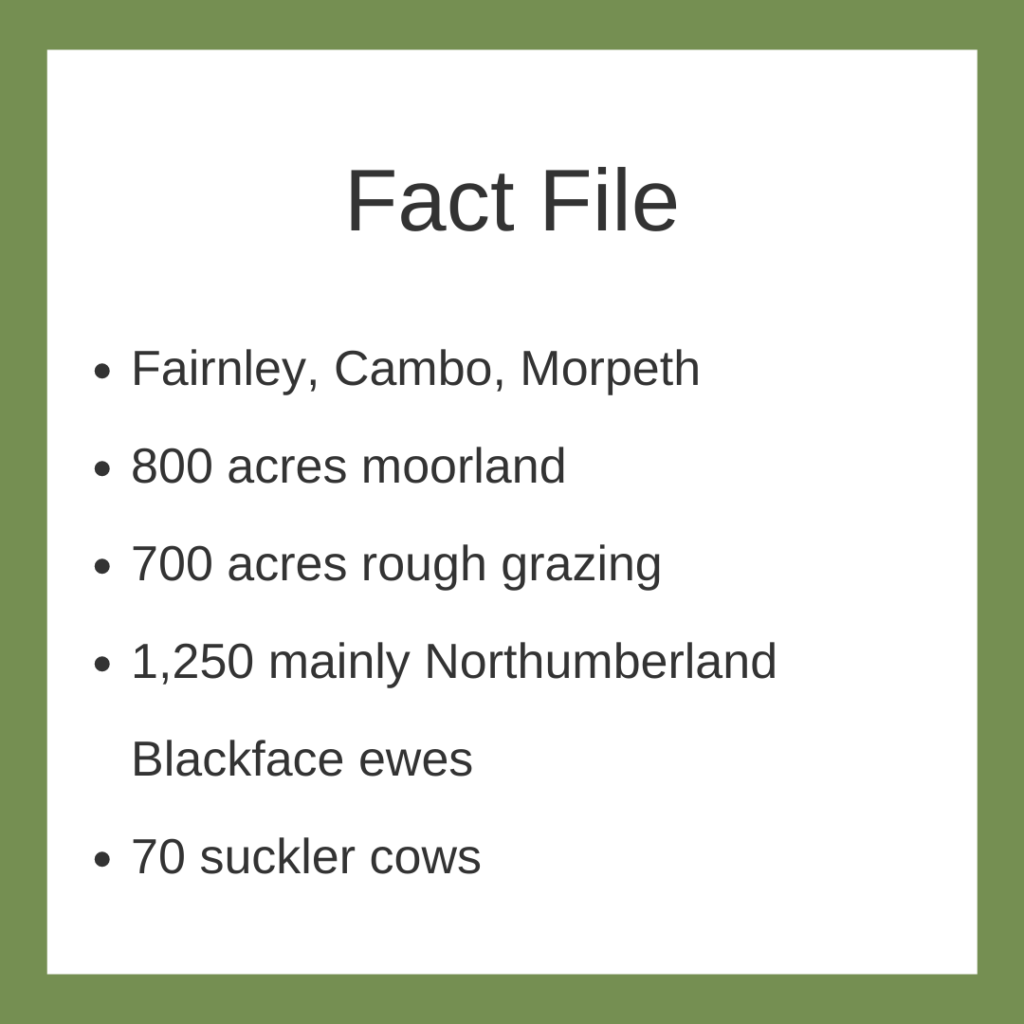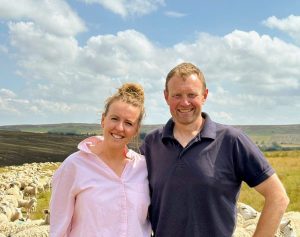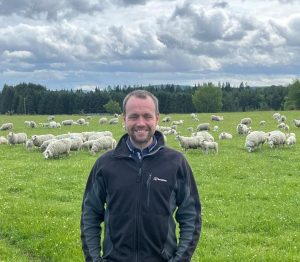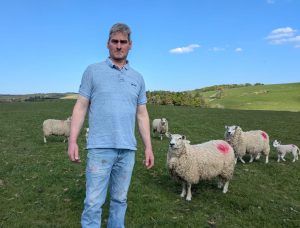Originally written in 2016 with kind permission from Joseph Anderson, Fairnley, Morbeth, Northumberland
Joe Anderson is building resilience in to his traditional hill sheep enterprise by expanding the outdoor lambing flock by 40% to 2,000 ewes and adding value by introducing higher performing Innovis genetics.
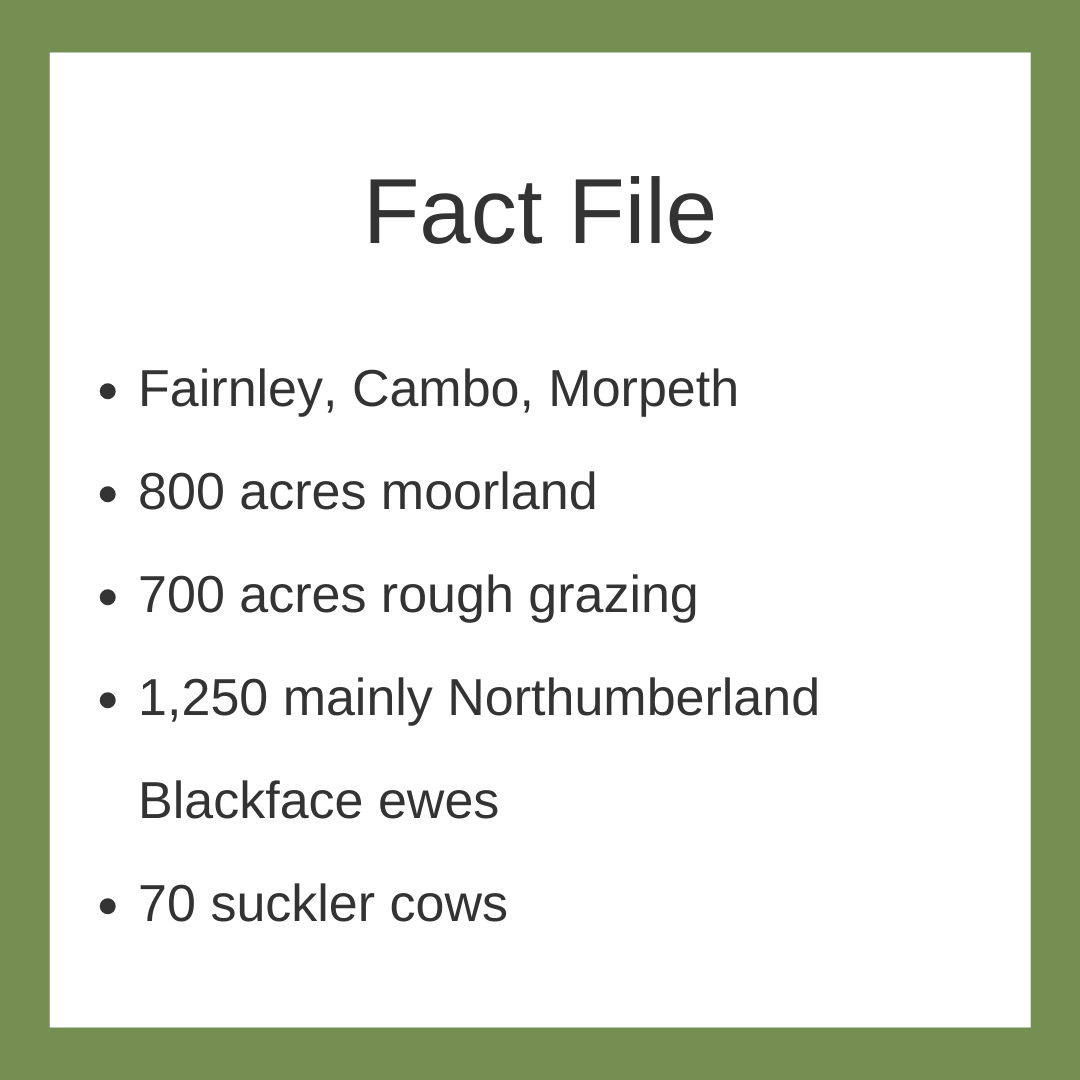
“We’re gearing up the business to fewer and fewer payments by pushing ewe numbers that can be managed by one person and increasing our options by developing a white faced flock. We’ve put a toe in the water by crossing our Northumberland Blackface with the Aberfield and Highlander to produce gimmers for sale or replacement purposes with better conformation and a higher value wether lamb.”
Joe says he first read in the press about the benefits of crossing a horned ewe with Innovis genetics.
“I liked the company’s ethos and the fact that all its sheep are performance recorded,” he explains. “We scoped them out at North Sheep, talked to some farmers and agreed to buy. Nowadays I think it’s important to invest in sheep that come with an evidence base – I need to know what I’m buying. That’s where Innovis scored.
“Last season we introduced Aberfield rams at a ratio of one to 85 Blackface ewes; 700 ewes scanned 174%, we’re expecting 160% reared and whilst the lambs at first sight look like a traditional Mule, they actually have a lot better conformation and good dense wool. The wethers are flying and are showing great average performance.
“The Aberfield gimmers are currently scheduled as replacements. Then again, interest has already been expressed by a private buyer. The Aberfield cross wethers averaged 18kg live at four weeks of age and we’re on target for the first to reach 20kg deadweight at 12 weeks.”
The second newcomer to Fairnley, the Highlander was used over 200 Blackface gimmers; they lambed 150% and plans are to put to the Aberfield.
“We lamb the entire flock outdoors in April; this year proved to be wettest I’ve ever known with frequent horizontal sleet and snow, yet we found the Aberfield crosses were real hardy, they’re sharp on their feet and kept standing, the Highlanders proved to be super super tough whilst they all demonstrated their reputation for ease of lambing which is vital when we check the flock four times a day and around 75% of the flock lambed within the first 14 days.”
Joe who is the fourth generation of Andersons to farm Fairnley, is demonstrating he is open to change, just as his grandfather, Jack was instrumental in developing the North of England Mule post WWII. “The Mule did the job, she added value by producing more lambs. However times are fast changing. Horned ewes have their place, however I struggle to see their long term future on this sort of LFA unit when the options are very limited, particularly when it comes to the wether lambs that are going away for considerably less money than white faced finished wethers are making.
“We’ve already adjusted labour; we used to be super staffed when we were lambing indoors with up to seven people to hand. Nowadays it’s over to me, so developing a flock with fewer input requirements has become even more a priority as we build flock number to 2,000 ewes at the expense of cutting back on suckler numbers,” he adding: “Overall, we are optimistic that our new strategy with focus on Innovis genetics will deliver the returns required to maintain a viable farming business at Fairnley.”
